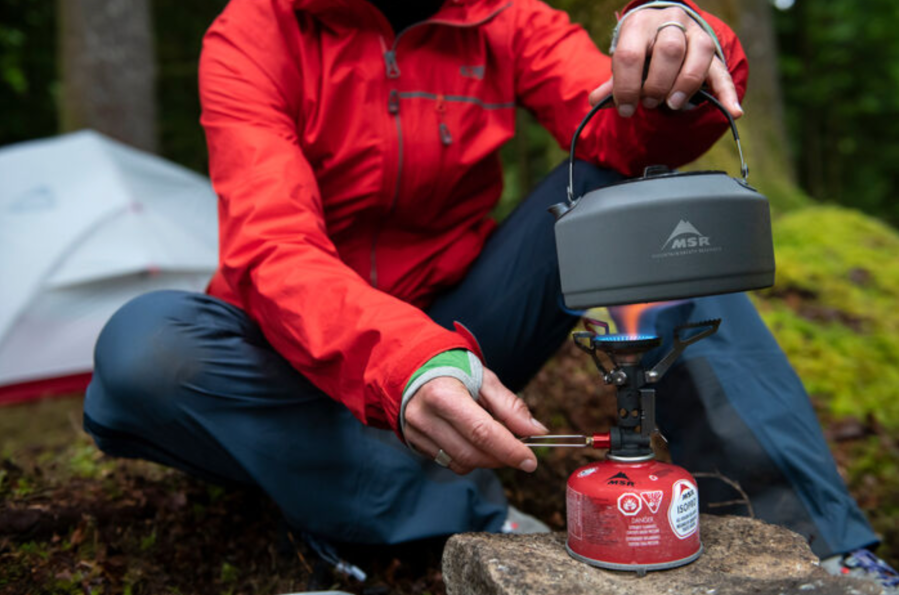Any hungry hiker will know the value of a good camping stove. This essential piece of kit will keep you fuelled on multi-day routes – or simply give you the pleasure of a summit cuppa on a chilly mountain day. But which of the many different types of camping stoves will suit your taste for adventure? In this article we’ll fill you in on the main components that make a good camping stove, including things like weight, packed size and regulation, and we’ll look at the different models out there, the trips and times of year year they’re best suited to and the various advantages and disadvantages they have been compared to each other.
Firstly, let’s look at the main features and components that make a good all-round camping stove.
What to look for in a camping stove
Weight
As with any kit, effectiveness must be balanced with weight considerations. On the heavier end of the scale you’ll find stove systems while more minimalist canister stoves, alcohol or solid-fuel tablet stoves can offer a lightweight camp cooking solution.
Packed size
Likewise, the size of your chosen camping stove must be considered alongside your other gear. If you’re intending to use you camping stove on multi-day trips, you’ll want to ensure the burner, pans and fuel can fit into a backpacking backpack. If you’re cooking for one on your backpacking trips, you can afford to keep things compact. You could consider a bulkier option if you are day hillwalking but you’ll no doubt appreciate the room in your daypack for other essentials such as layers, map and compass, food and hydration.
Stability
Of course, camp cooking can be a dangerous matter especially during the dry season. It’s also frustrating to cook up your dinner only to lose it to an unstable set up. Stoves, such as remote canister stoves, tend to be the most stable as they’re short and close to the ground. Some taller models, such as integrated stove systems, do offer stabilising post stands but these are often sold separately. They also add extra weight to your system overall.
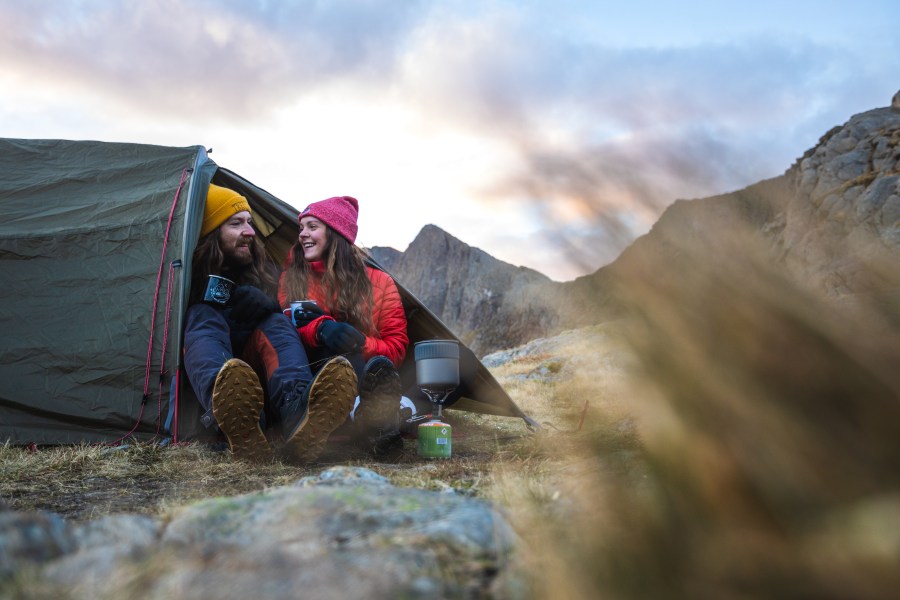
A couple using the MSR Pocket Rocket Deluxe in Eryri.
Credit: Benjamin Cannon
Boil time
For some campers, there’s a joy to be had in waiting for your water to boil to rehydrate your dinner. Others want quick gratification when they’re waiting for their coffee in the morning. It’s a matter of personal preference. But if you are looking for a quick and efficient boil time, look for a burner power output wattage of between 2,000 and 4,000. For three-season camping in the UK, 2,500W should serve you well.
Burner head
The diameter of your burner head will affect the success of you camp meals. Gas stoves with smaller burner heads can cause burn zones, or hot spots, on cooking pans. Others are wide to reduce this but won’t heat the contents of tall pots as quickly. For boiling water, a small diameter shouldn’t cause any issues but for cooking solid foods, you might require a wider head to avoid crisping your noodles to the bottom of the pot.
Flame regulation
For any camp cooking beyond boiling water, you’ll benefit from a flame regulator. The good news is, most modern camp stoves are built with a control valve for adjustments to the strength of your flame.
Wind protection
There will hardly be a camper in the world who hasn’t experienced the way winds and gusts can pick up in high places. So, you’ll need to invest in wind protection for your camping stove or run the risk of eliminating its efficiency. Windshields increase efficiency by shielding from the elements and doubling as a heat reflector. These can be integrated or made from thin aluminium sheet.
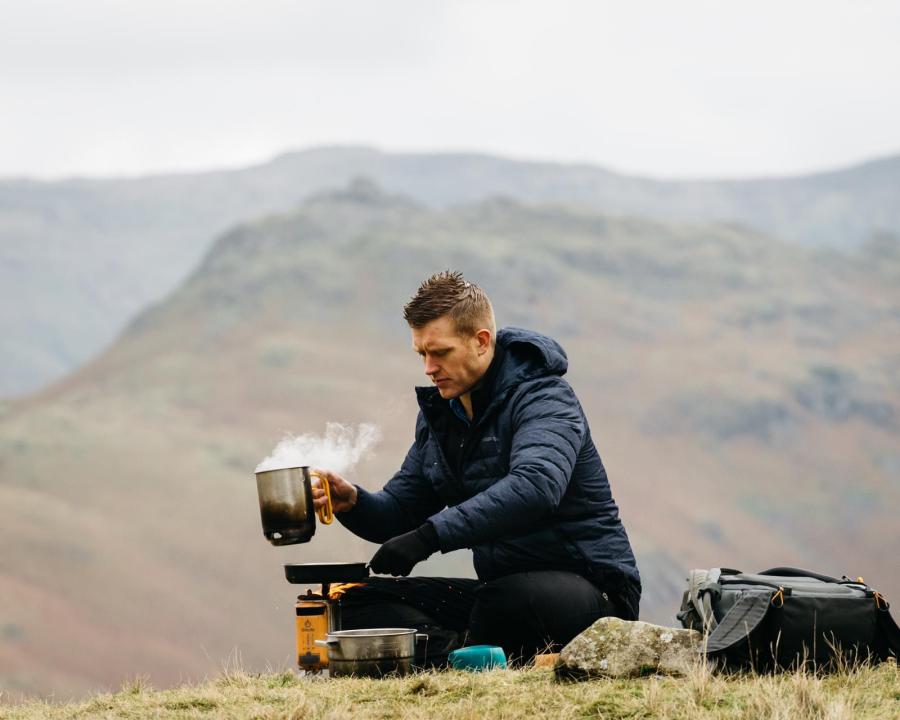
TGO contributor Harrison Ward cooking on the Biolite Stove in Greenburn Valley
Credit: Daniel J Toal
Additional features
A piezo igniter – a button that lights your stove with an electric charge – is an added convenience but these can sometimes be prone to failure, so even if your stove boasts one, it’s still wise to carry a firesteel, lighter or matches just in case it breaks. Heat exchangers are another useful, common feature of stove systems. Manufacturers claim these small metal coils at the base of a cooking pot will reduce heat waste by concentrating the flame from the burner head to the pot.
Now, onto the different types of camping stoves.
The different types of camping stoves
- Canister-top camping stoves
- Remote canister camping stoves
- Stove systems
- Wood-burning camping stoves
- Alcohol stoves
- Liquid and multi fuel stoves
Canister camping stoves
Canister stoves are easy to use, low maintenance and can be very lightweight and, as such, they tend to be the most common type of camping stove you’ll see out in the hills. Simply screw the burner head into the gas canister, ignite, and away you go – as in the MSR Pocket Rocket Deluxe. The downsides include stability issues – which can be alleviated with wide, serrated pan supports – and difficulty assessing the level of gas left in your canister causing the need to take a back-up.
Remote canister camping stoves
Similar to canister stoves, these models have a free-standing burner head which connects to a gas canister via a flexible hose. They allow for greater stability and efficiency than the traditional canister stoves due to being lower to the ground. They also will sometimes allow the canister to be inverted for better performance in cold weather, as in the Alpkit Koro and SOTO Fusion Trek which was recently awarded David Lintern’s ‘Best Buy’ in his camping stove tests.
Stove systems
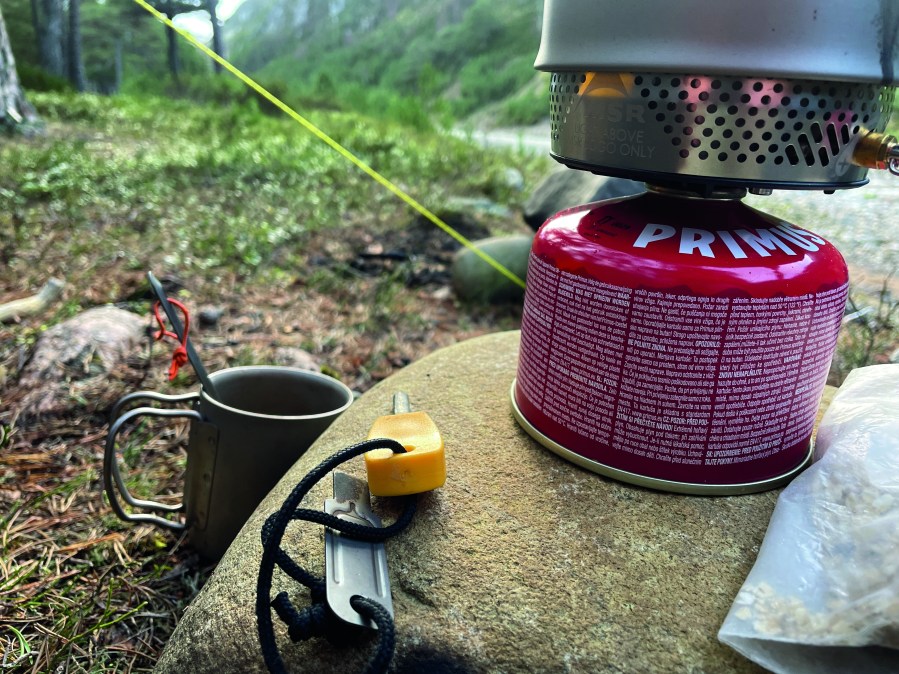
Testing the MRS Reaktor in Glen Feshie.
Credit: David Lintern
Offering everything you need in an all-in-one cohesive piece of packable kit for camp cooking, personal stove systems allow you to screw a burner head into a canister and attach an integrated pot to the burner head. While this does sometimes result in lower stability and heavier weight, some models have been constructed in lightweight materials, as in the Jetboil Stash and MSR Reactor 1L.
Stove wood-burning camping stoves
Wood stoves are favoured by bushcraft fans and can be a real joy to use, as in the Solo Stove Titan. They can be simple and lightweight – you find your fuel (twigs and dry wood) in the wild – and are often constructed from materials such as a titanium and can fold flat. However, they are less reliable and likely avoided by those conscious of the risks of wildfire or woodland depletion. Likewise, finding dry wood can be very difficult in wet weather.
Alcohol stoves
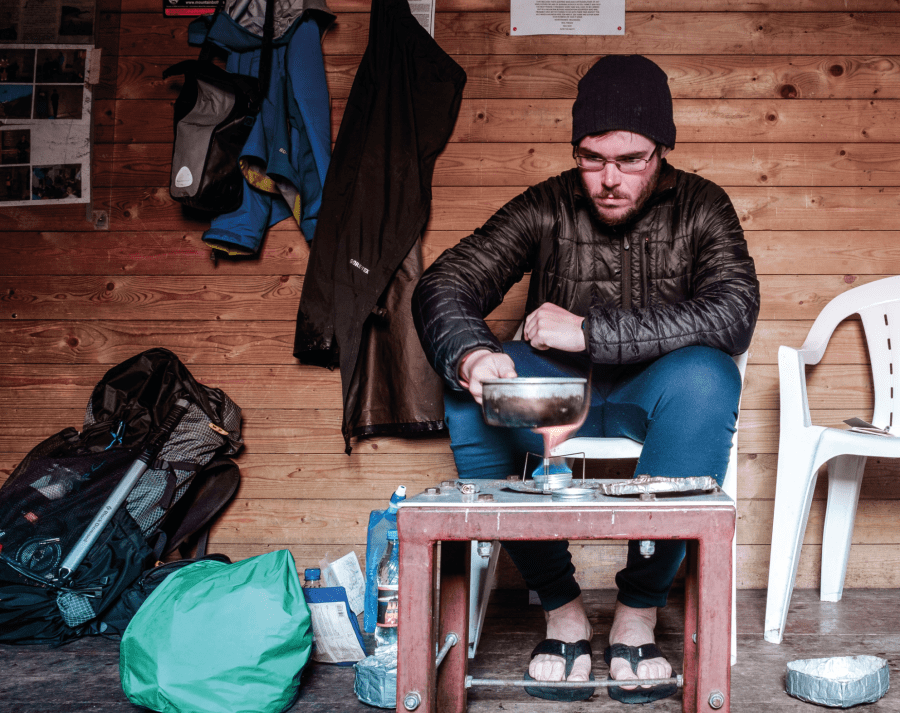
Using an alcohol stove in a bothy.
Credit: Alex Roddie
Alcohol are simple and light. The best designs integrate a windshield as well as pot support which can enable quicker boil times. Indeed, this type of camping stove is slower to boil water than gas, offers little variation of flame strength for simmering, and the alcohol fuel reserves are heavy over long excursions. However, they are quiet, cheap to run, can be more environmentally friendly, and offer a back to basics experience.
Liquid and multifuel camping stoves
This type of camping stoves – the Optimus Polaris Optifuel being one example – run on fuels such as white gas or paraffin, petrol, diesel and even aviation (jet) fuel. They can be very powerful, and are even efficient for melting snow on winter camps. For the international backpacker, they’re also a reliable option and for expeditions to remote parts of the world where gas might not be available.
However, they’re likely to be much heavier than a canister stove and require more priming and maintenance. Furthermore, fuel spills are possible.
You may also like:

